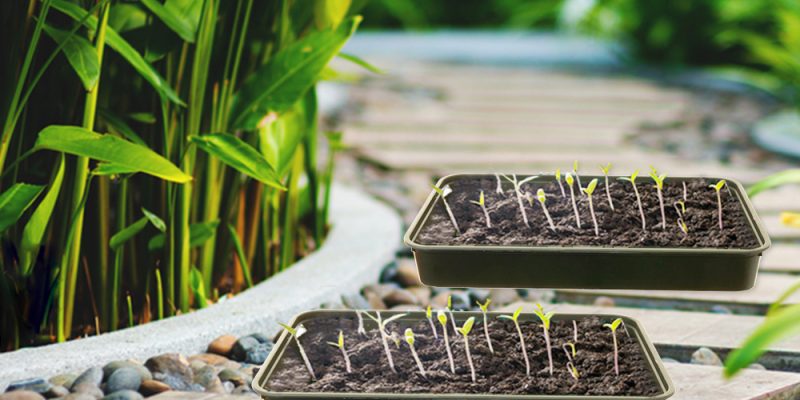In the domain of cultivating, fans are frequently acquainted with a large number of devices and extras pointed toward improving plant development and general style. Among these, a gravel tray stands apart as an adaptable and key things for both indoor and outside cultivating.
This article investigates the different utilizations of the gravel tray and their significance in keeping up with sound plants. By giving a steady climate to seed germination, dampness guideline, and compelling seepage, they are a fundamental device for landscapers.
This article will dig into gravel trays’ elements, benefits, and imaginative purposes to assist perusers with augmenting their planting potential.
Dampness Guideline and Waste
Gravel tray go about as a productive dampness guideline framework by keeping an overabundance of water from collecting around plant roots. The layer ingests and rearranges the abundance of water, forestalling waterlogging and potential root decay.
Moreover, the trays work with seepage by gathering abundant water, keeping it from leaking onto surfaces or causing water harm.
A Gravel tray, or narrow mats, are shallow trays or holders loaded with a layer of gravel or rocks. These trays are usually made of plastic or metal and are accessible in different sizes and shapes to oblige different planting needs.
One of the essential purposes of gravel trays is for seed germination. It advance sound development in seeds and seedlings by giving a stable and dampness-controlled climate.
The slim activity of the gravel layer assists with keeping a reliable degree of dampness, keeping seedlings from becoming waterlogged or drying out.
Key Benefits of Gravel Tray
1. Infection Avoidance and Cleanliness:
Gravel trays add to plant well-being by limiting the gamble of illnesses brought about by waterborne microbes. The trays make an obstruction between the fertilized soil and standing water, diminishing the possibilities of soil-borne illnesses and advancing better cleanliness in the nursery.
2. Supports Transplantation:
Relocating fragile seedlings can be a difficult errand. It work on the interaction by giving youthful plants a steady and controlled climate. By involving the tray as a transitory home for seedlings, landscapers can move them to bigger pots or nursery beds when prepared, limiting root unsettling influence and shock.
3. Further developed Stickiness Guidelines:
Gravel trays help keep up with ideal mugginess levels, which is particularly significant for plants that flourish in high dampness conditions. By setting water in the tray, the dampness gradually vanishes, making a microclimate around the plants and expanding moistness levels.
4. Tasteful Improvement:
Gravel trays offer practical advantages and add visual enticement for indoor nurseries. They can be redone with brightening stones, shells, or shaded gravel to make an alluring presentation while giving a reasonable base to pruned plants.
Read Also: A Guide To Wall Hanging Planters For Your Home
Creative Applications of Gravel Tray
1. Terrariums and Little Gardens:
Gravel trays make terrariums or smaller-than-expected gardens. Nursery workers can make enthralling scenes inside a restricted space by layering soil, shakes, and plants inside the tray.
The tray’s water maintenance properties assist with keeping up with the terrarium’s stickiness, advancing the development of greeneries, plants, and other dampness-cherishing plants.
2. Tank-farming and Hydroponics:
A gravel tray is essential in tank farming and hydroponics frameworks. In tank farming, the trays establish an establishment for developing plants without soil. At the same time, the gravel layer helps support the root foundations and works with water and supplement retention.
In hydroponics, the trays act as the plant’s mechanism, permitting the roots to get supplements from water that are improved by fish squander.
3. Base Watering Method:
Nursery workers can involve gravel trays for the base watering procedure. By filling the tray with water and permitting plants to ingest dampness from beneath, this strategy guarantees that water arrives at the roots straightforwardly; decreasing the gamble of contagious infections and empowering profound root development.
4. Spread Stations:
Gravel trays are brilliant devices for plant proliferation. Landscapers can utilize them to make proliferation stations where cuttings or seedlings are set in individual pots or cell trays with the ideal developing medium. The slender activity of the gravel layer gives a steady stockpile of water to the cuttings, advancing root improvement.
To Sum It Up
Gravel tray is extraordinarily flexible cultivating instruments that offer many advantages. These trays demonstrate their value in different applications, from advancing solid seed germination and effective seepage to supporting transplantation and making spellbinding terrariums.
By understanding the adaptability and advantages of the gravel tray, grounds-keepers can enhance their plant development, keep up with ideal mugginess levels, and further develop, by and large, cultivating achievement.
Whether for indoor or open-air cultivating, integrating gravel trays into one’s planting routine is a significant stage towards guaranteeing solid, flourishing plants.














Comments